Spring is Turtle Time
IMPROVING HABITAT FOR WILDLIFE
By Jen Adams, Director of Land Stewardship
Turtles You Might See in Our Area
Dutchess County is home to a variety of turtle species, ranging from common to rare. Among the most frequently spotted are the painted turtle, snapping turtle, box turtle, and sometimes the invasive red-eared slider. Our turtle species plays an important role in the local ecosystem as prey, predators, and indicators of water quality. Most turtle populations in New York State are declining, primarily due to habitat loss. Winnakee is working locally to change this!
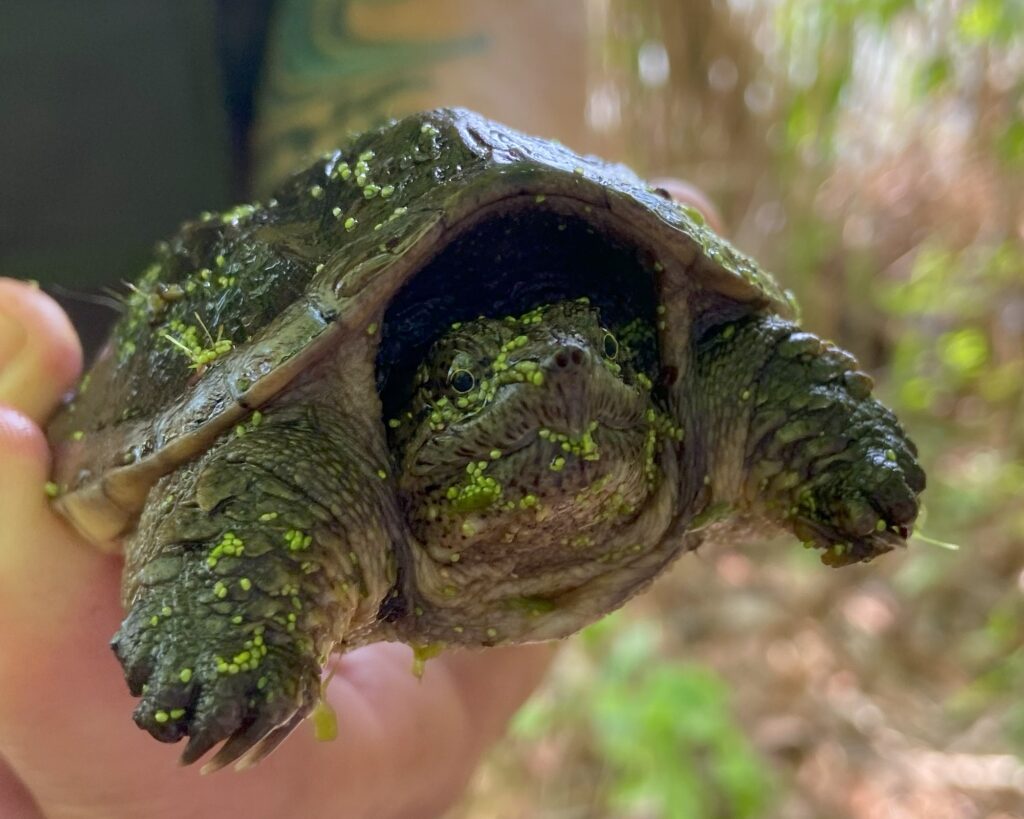
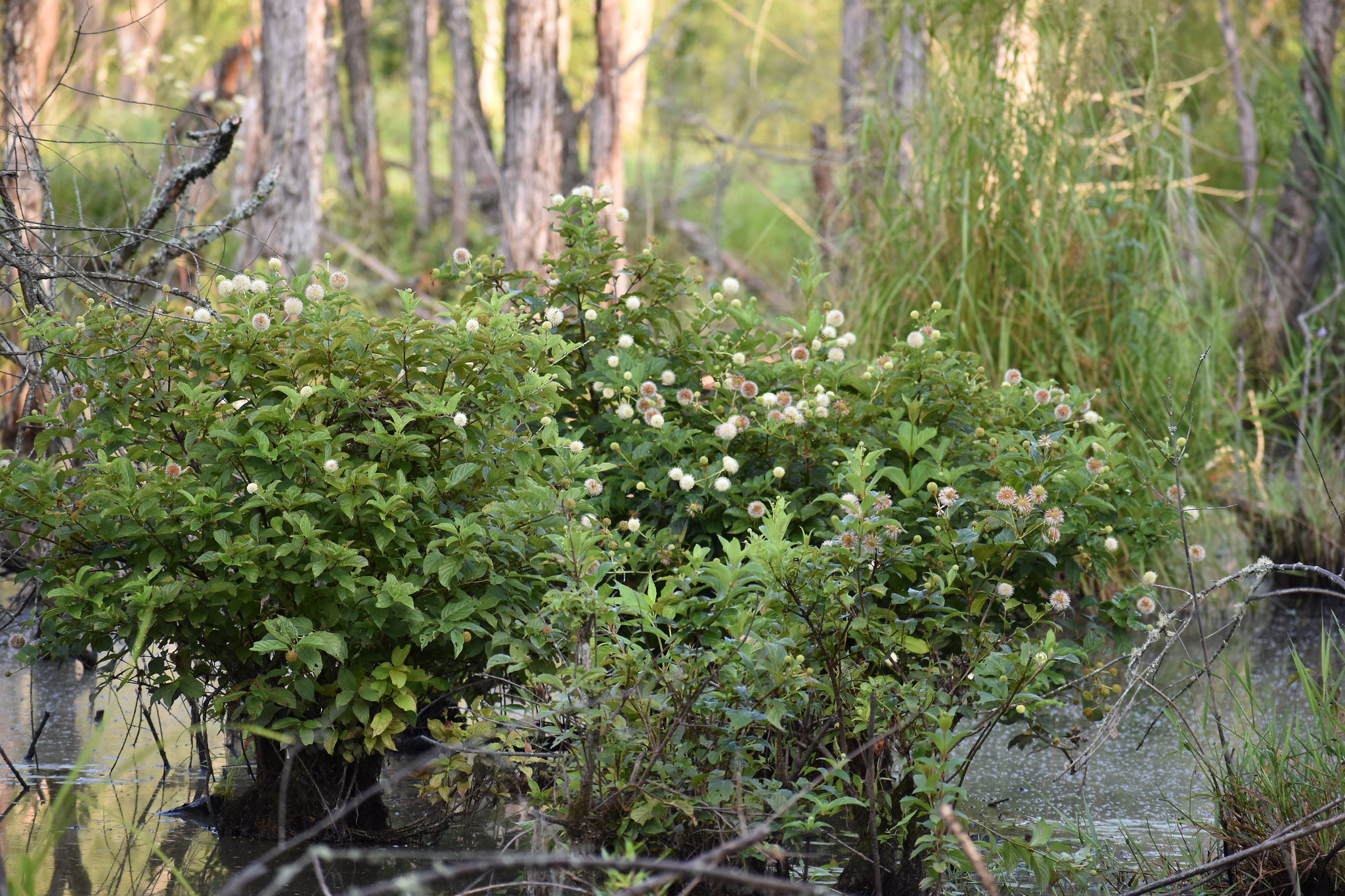
Turtles as Indicators of Wetland Health
Turtles are important indicators of the health of wetland ecosystems. They depend on a diverse range of aquatic organisms as food, many of which are sensitive to changes in water quality. For example, macroinvertebrates like mayflies, stoneflies, and caddisflies are a common food source for turtles that are highly sensitive to pollution in wetlands. Unfortunately, pollutants like runoff from farms and roads and litter can significantly threaten the health of these species and our wetland ecosystems. By monitoring and protecting turtle populations and their habitats, we can understand the water quality in the entire wetland and improve habitat for a wide array of species that depend on these wetlands, such as salamanders, frogs, snakes, beavers, muskrats, and many other important wildlife species.
Breeding and Nesting Behavior
During the spring, turtles begin breeding and seek out sunny areas with sandy or loose soil for laying nests. These ideal conditions sometimes lead them to lay their eggs in places that can conflict with human activities, such as compost bins, gravel pits, lawns, fire pits, or along walking trails. Wherever possible, it’s important to leave these nests undisturbed and protect them from human interference. However, in certain cases like compost bins where temperatures can become dangerously high for turtle eggs, you can reach out to a local wildlife expert for advice on how best to handle the situation.
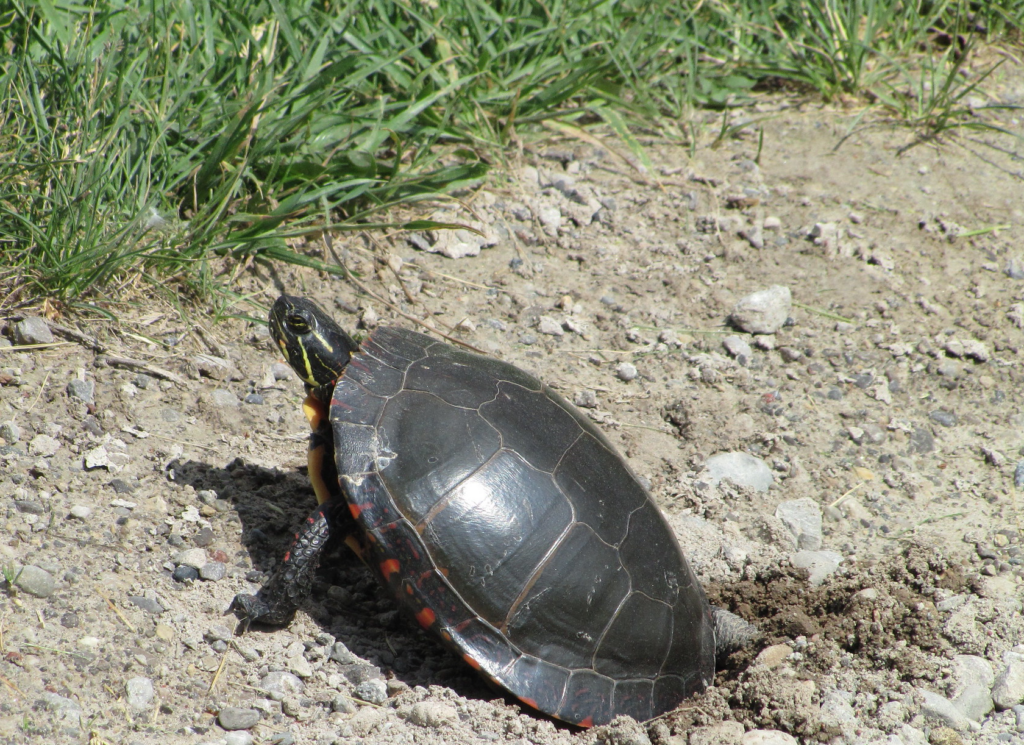
Winnakee Land Trust’s Turtle Monitoring Program
Winnakee Land Trust has recently launched a turtle monitoring program in partnership with The Wetland Trust to understand the current populations of turtles at our preserves and to implement management actions to enhance their habitat. A key focus of the program is identifying areas where turtles frequently cross roads to reach their breeding grounds. Animals often rely on multiple types of habitat across a landscape and roads can contribute to habitat fragmentation by cutting off access to certain habitat types. For example, turtles may spend most of their time in swamps or marshes but must travel to drier areas to nest, which could be across busy roads. By creating breeding sites closer to wetlands, we hope to reduce the need for these dangerous road crossings. Ultimately, our goal is to lower the number of turtle road strikes and minimize mortality among all turtle species. Through monitoring, protection, and stewardship of turtle habitat, Winnakee is able to do critical conservation work that will benefit wildlife, water quality, and the humans that depend on these ecosystems.
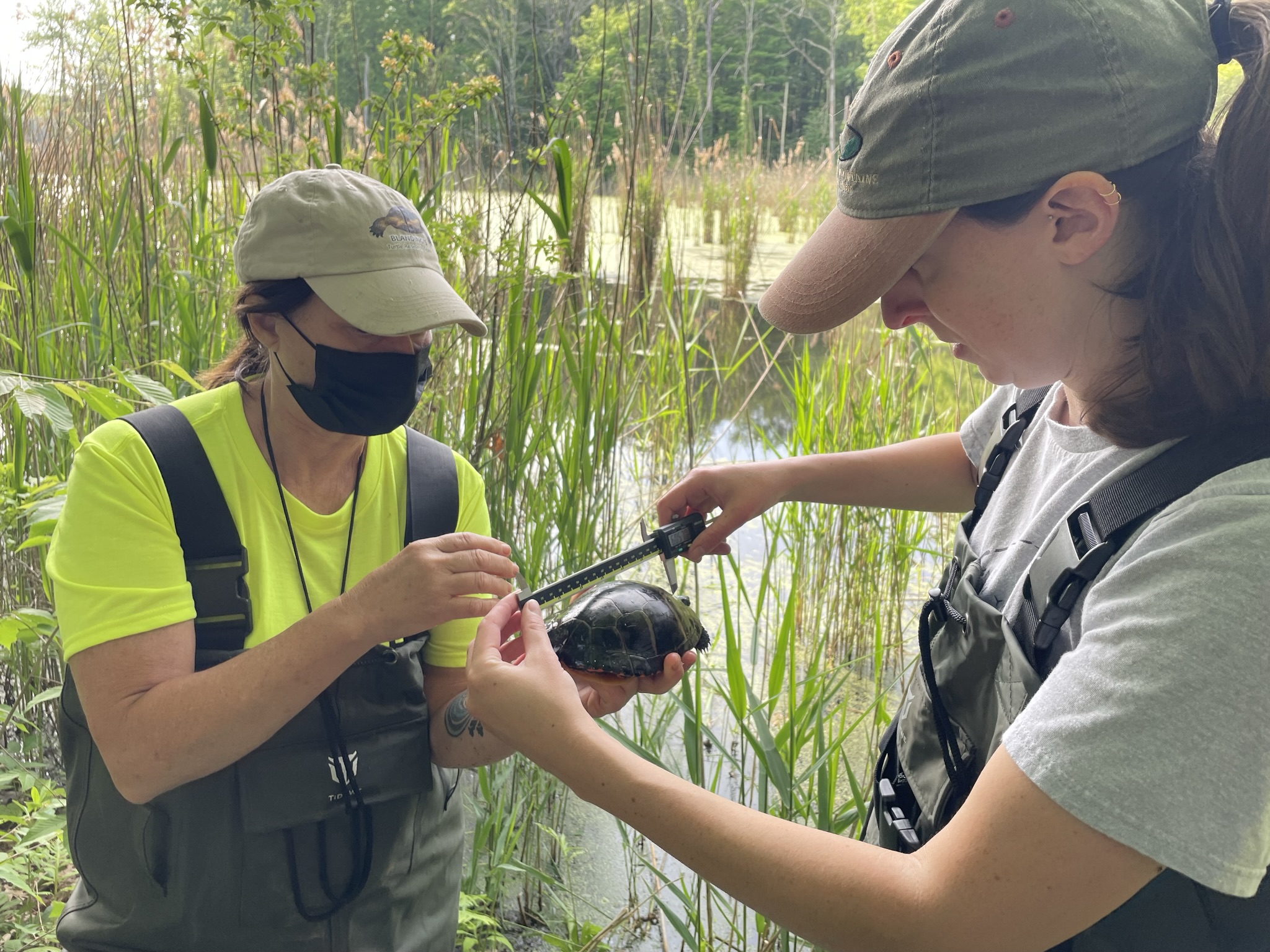
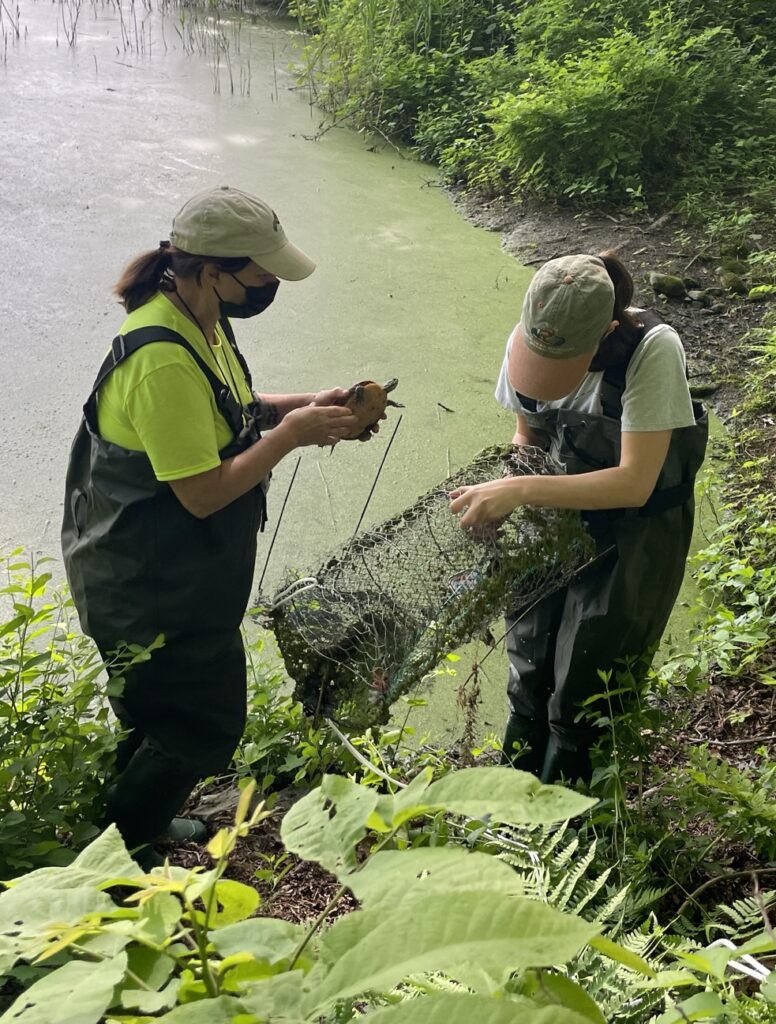
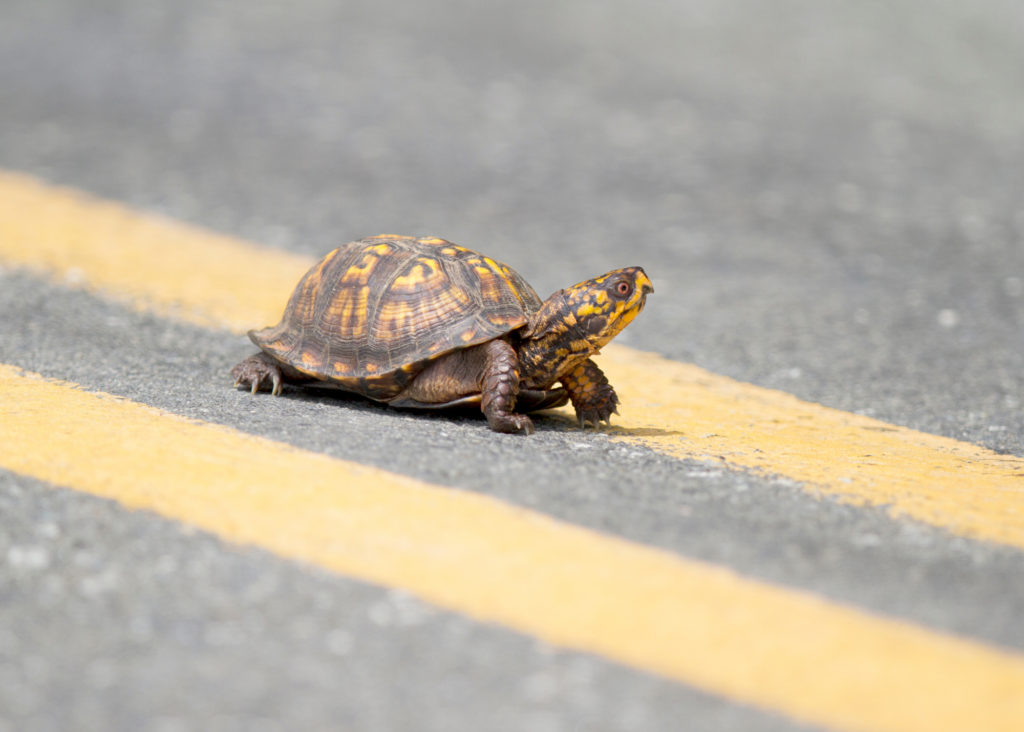
“Give turtles a brake!” If you see turtles on road crossings, please stop—only if it’s safe to do so—and gently move the turtle to the side of the road in the direction it was heading. For safety reasons, snapping turtles should only be handled by someone experienced, or you can help them across the road by gently nudging them with a plastic shovel or broom.
Helping Turtles and Turtle Habitats on Your Property
- Make sure there is a vegetative buffer around your wetland, which helps as a natural water filtration and provides shelter for turtles from predators
- Remove invasive plant species that disrupt the local ecosystem
- Plant native species (such as willow, swamp milkweed, buttonbush, cardinal flower, redtwig dogwood, jewelweed, horsetail, white turtlehead, shrubby cinquefoil) along wetlands to create a beautiful buffer and increase biodiversity for important food sources that turtles eat (frogs, snails, bugs, etc.)
- Leave fallen logs in the water for turtles to bask on
- Check sandy, gravel or loose soil areas along wetlands for nests before mowing during nesting season in May and June
- Don’t disturb nesting turtles and flag nests you discover to avoid them
- Keep dogs on leash to avoid disturbing nesting turtles
- Avoid pesticides and fertilizer near wetlands to keep water habitats chemical free
- Service septic systems regularly to keep functioning properly and consider buffering your septic with low rooting native shrubs to improve filtration
- Report findings of Species of Greatest Conservation need to DEC, Region 3, Wildlife Department at (845) 256-3098.
